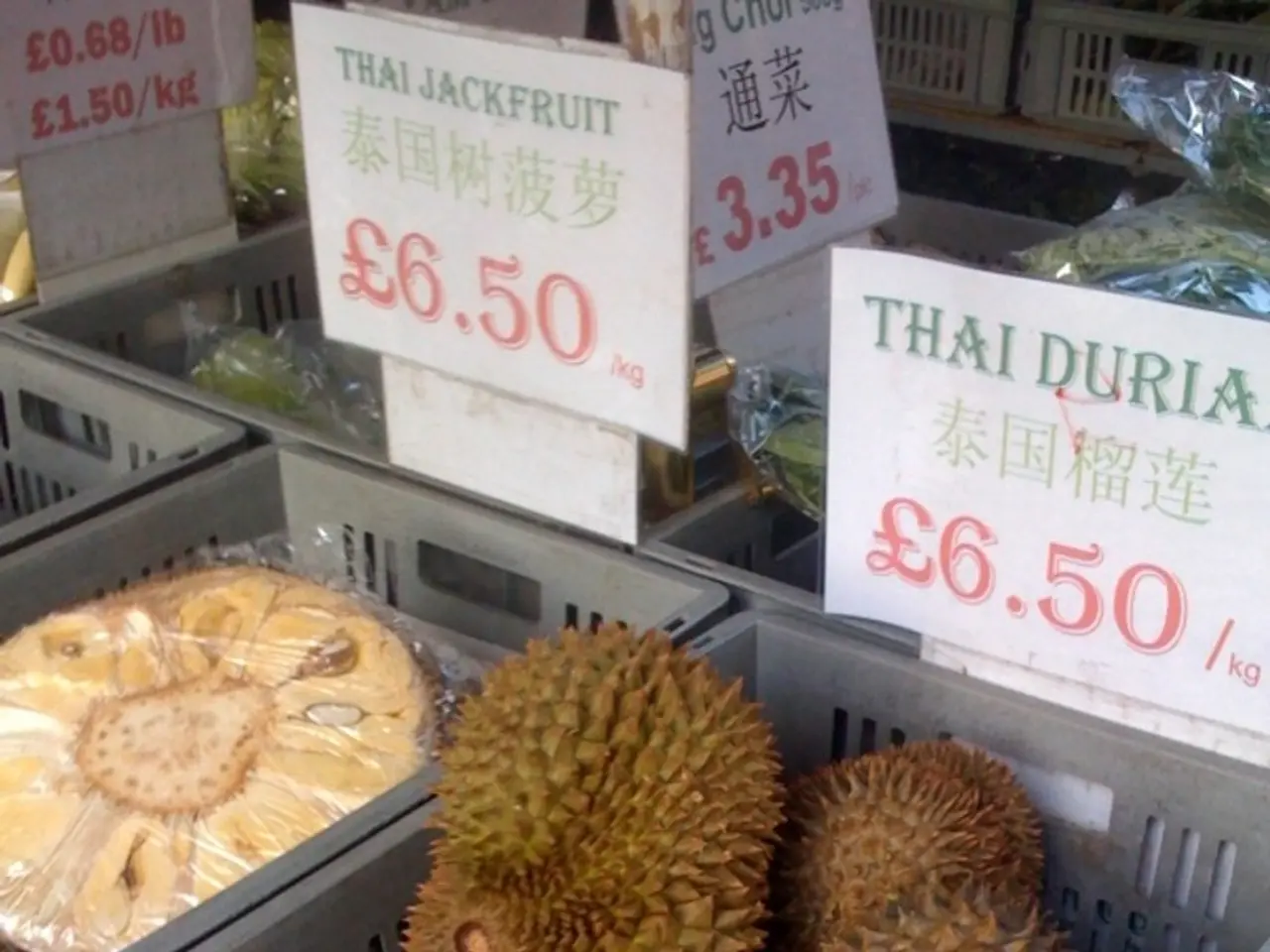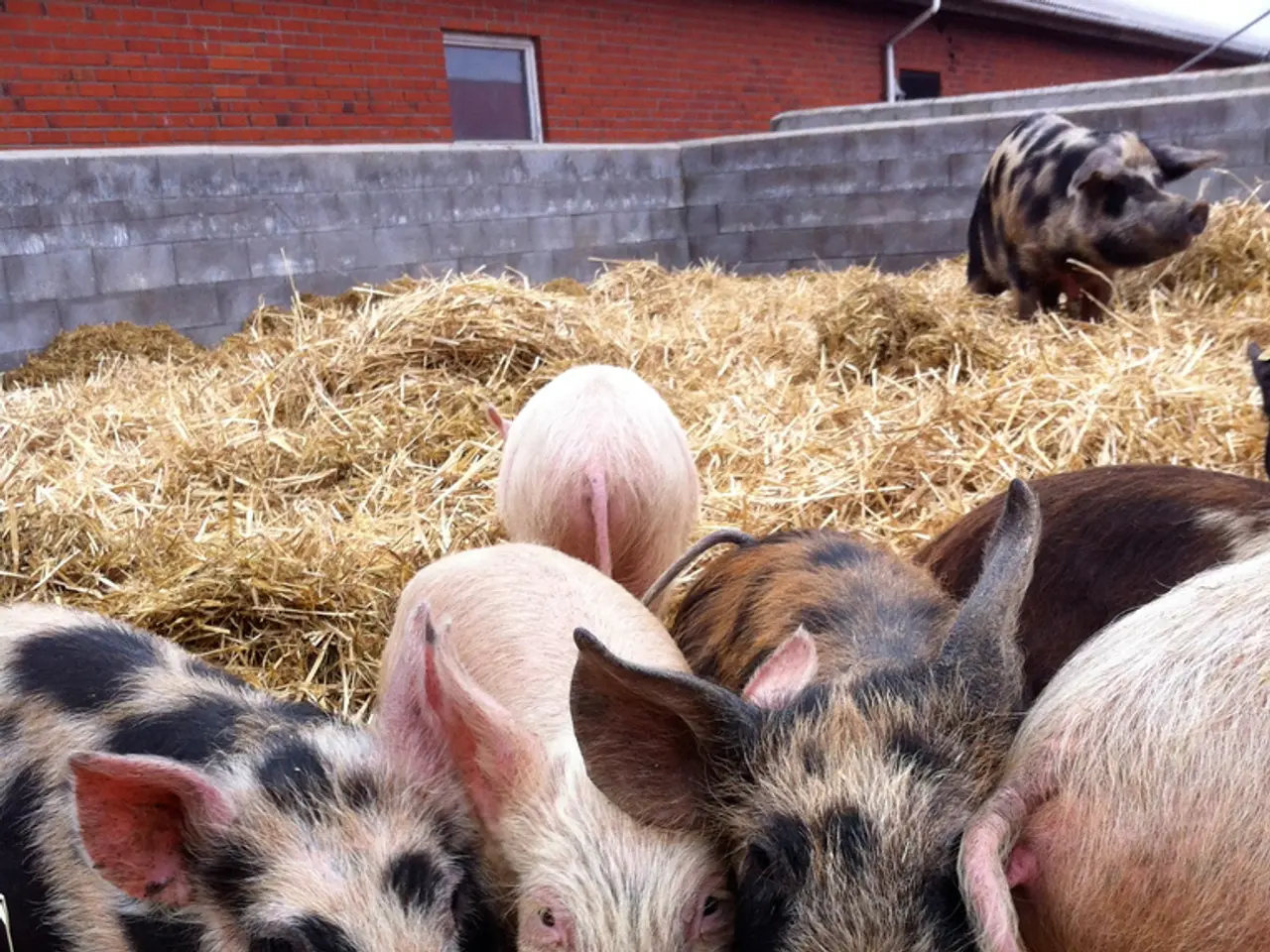Increase in Sugar Prices Due to Reduced Cane Harvest in Brazil
================================================================================
The global sugar market is gearing up for a significant shift, with forecasts predicting record or near-record production levels for the 2025/26 season. This development, driven by favourable weather conditions in major sugar-producing countries, could lead to a sizable production surplus and increased ending stocks, creating a bearish outlook for sugar prices.
According to various estimates, global sugar production is expected to reach around 188.8 to 189.3 million tonnes in 2025/26, surpassing the previous peak around 2017/18. This forecast hinges on favourable weather conditions, particularly in key regions such as Brazil, India, Thailand, and China.
However, there is some uncertainty due to weather risks, particularly less rainfall observed early in 2025 in central-south Brazil, the world’s largest sugarcane region. This could potentially lower Brazil’s output forecasts slightly from some prior estimates.
Consumption is expected to be slightly lower or flat compared to 2024/25 in some forecasts, mainly due to emerging impacts of GLP-1 receptor agonist drugs such as Ozempic reducing sugar demand in wealthier countries. However, the USDA forecasts a mild consumption increase.
The sugar surplus forecast varies between around 5 million tonnes to 9.3 million tonnes, which would be the largest surplus in several years, helping to rebuild global stock levels that had been drawn down since 2020.
Brazil’s sugar production outlook is key: estimates range from about 39.1 million tonnes (CZ app) to a USDA estimate of 44.7 million tonnes due to favourable weather and shifts from ethanol to sugar production driven by relative prices. However, drought and heat concerns could temper these estimates.
The European Union expects sugar beet production totaling about 15.2 million tonnes (white sugar equivalent) in 2025/26, contributing to the global supply.
Market impact: Given this surplus outlook, global sugar prices have experienced downward pressure recently, despite some short-term rallies. The surplus and stock increases are expected to keep prices relatively soft over the 2025/26 season.
In summary, the 2025/26 season is shaping up for record or near-record global sugar production, a sizable production surplus, and increased ending stocks, creating a bearish outlook for sugar prices barring unexpected supply disruptions or demand changes.
Trading activity reflected this trend, with October NY world sugar (SBV25) closing up +0.24 (+1.50%) on Friday, and October London ICE white sugar (SWV25) closing up +8.80 (+1.90%) on the same day.
Meanwhile, China’s June sugar imports increased by 1,435% to 420,000 MT, suggesting that some countries may be stocking up on sugar in anticipation of lower prices. Sugar prices settled higher on Friday due to concern about smaller sugar supplies from Brazil.
The International Sugar Organization (ISO) raised its 2024/25 global sugar deficit forecast to a 9-year high of -5.47 MMT, indicating a significant imbalance in supply and demand in the current season. On Tuesday, sugar prices fell to 5-week lows due to signs of stronger sugar production in Brazil.
Sports enthusiasts might take a break from their favorite games to consider the market outlook for sugar. The record or near-record production levels forecasted for the 2025/26 sugar season could disrupt the sugar market, leading to a bearish outlook for sugar prices and a potential surplus of up to 9.3 million tonnes. This surplus could encourage some countries to stock up on sugar in anticipation of lower prices, as seen in China's June sugar imports surging by 1,435%.






